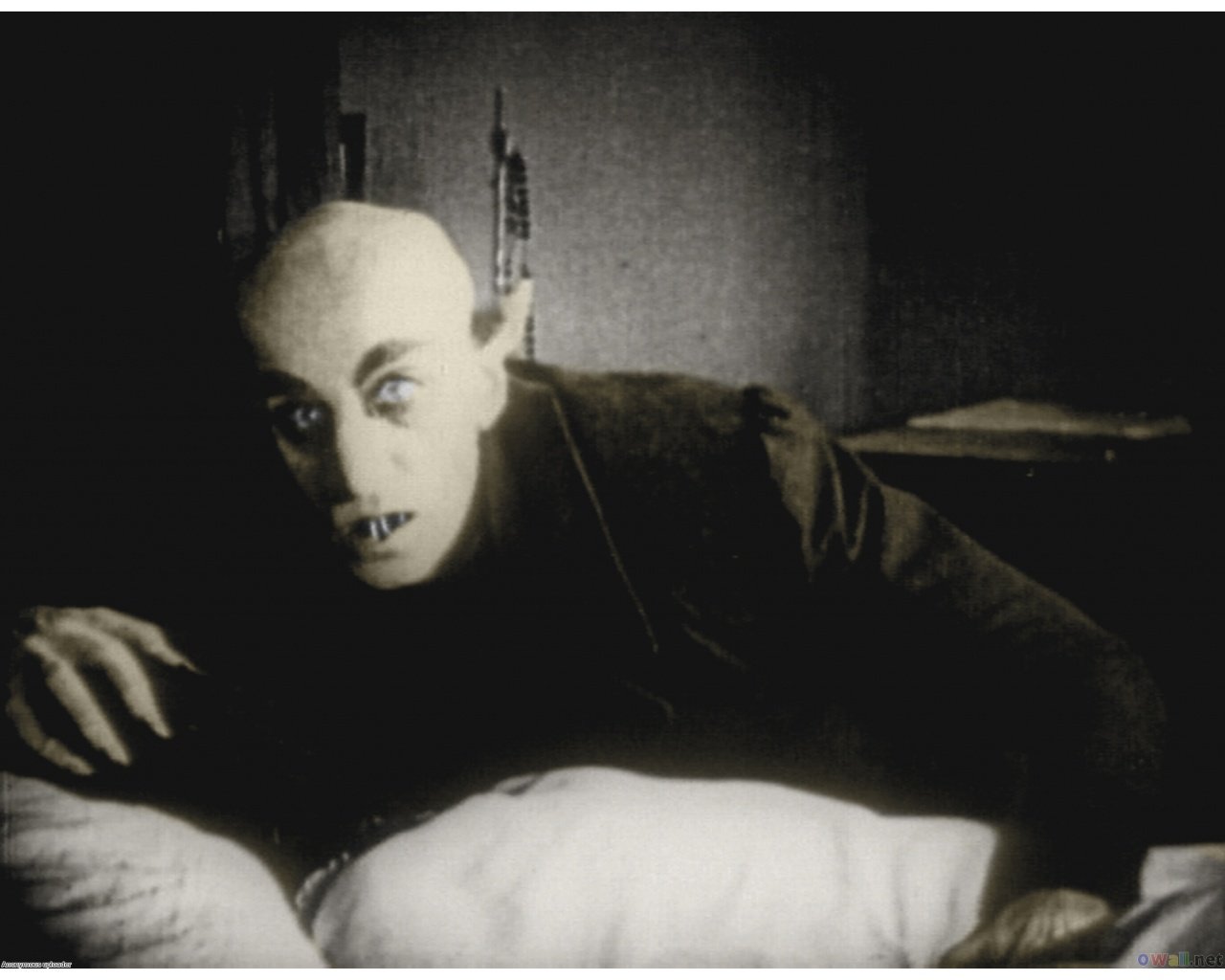Murnau’s 1922 silent expressionist classic is one of defining moments in movie-making. It borrowed its story wholesale from Bram Stoker’s Dracula, gave it the lightest of resprays and hoped no one would notice the theft. Bram Stoker’s widow noticed and sued for breach of copyright, won the case and had all the prints of Nosferatu destroyed. But the film refused to die, and rose from the undead.
Its star, who plays Count Orlok (aka Nosferatu), is one Max Schreck, “Schreck” being the German word for terror. Maximum Terror – and you thought modern Hollywood had a lock on this sort of thing. Adding to that in terms of myth-making, it was always rumoured that Schreck was in real-life a vampire too (something Willem Dafoe had a bit of fun with when he played Orlok in 2000’s Shadow of the Vampire). Whether Schreck sucked blood for fun or not in reality, his Orlok is a very unsavoury piece of work. A long way from the urbane Dracula, habitué of velvet-draped boudoirs, Orlok is bat-eared, bald and has two ratty fangs in the middle of his maw. And as he seeks a place to rest his head in Bremen, spreading plague as he goes, we’re given the distinct impression that this is one deeply troubled soul (if a vampire can be said to have a soul) for whom existence is a curse.
Director FW Murnau’s techniques in the film are noteworthy. Notice how as the action switches between desolate Carpathia and urban Bremen, Murnau on a couple of occasions intercutting the action in the two locations in montage sequence. This is routine today, but back in 1922 Murnau was one of the first to do it. What we’re watching is the book on film language as we understand today being written on the hoof.
Adding to Murnau’s technical mastery is his flair for the theatrical. Considering how quickly horror films go off the boil in terms of shock effect, the sequence where Orlok rises from his coffin while being shipped to Europe – pivoting from the feet like a man attached to a plank (surely that’s how it was done) – is remarkable for its ability, even now, to generate a “wow” if not a shudder. Back in 1922 it scared the shit out of people. Though Nosferatu can’t lay claim to being the first vampire film ever made – the Hungarian Drakula Halála beat it to the post one year before – in terms of sheer atmosphere it’s still one of the best. Maximum Terror indeed.
Nosferatu – at Amazon
I am an Amazon affiliate
© Steve Morrissey 2013

